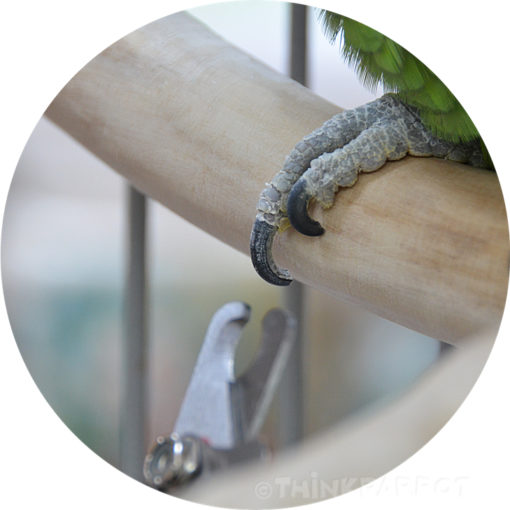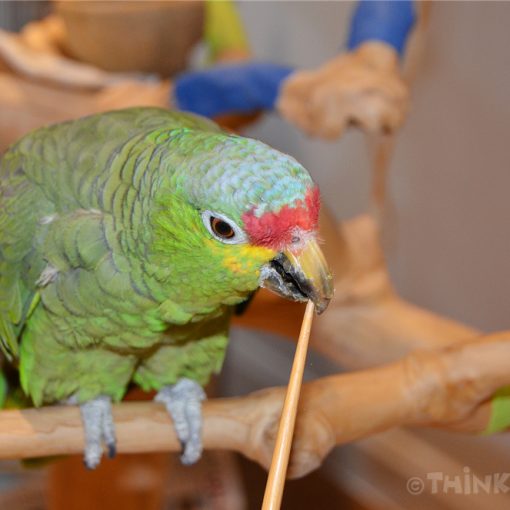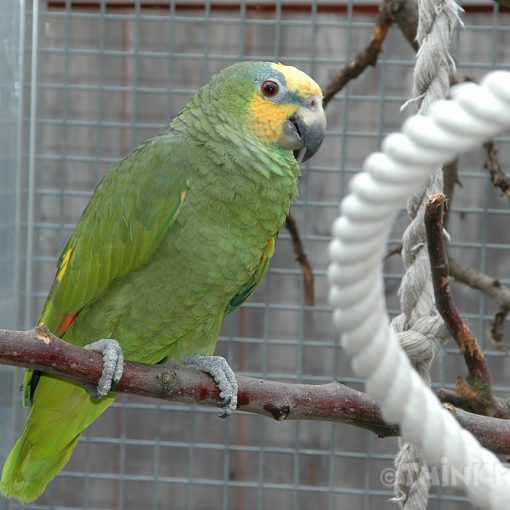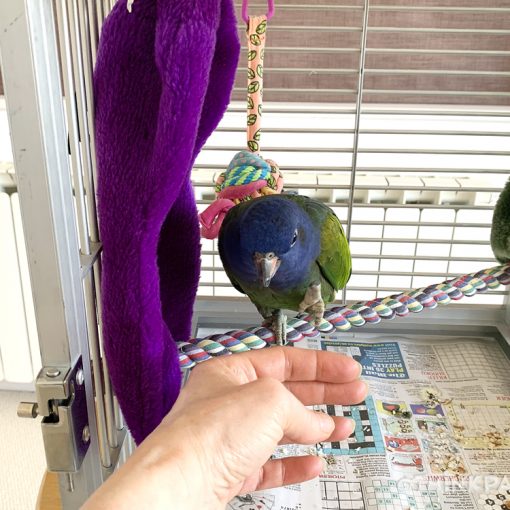If the outcome to a behaviour is desirable, then we will repeat that behaviour. That outcome or consequence is therefore said to be reinforcing.
Positive Reinforcement
As trainers we can engineer the outcome so that our parrots repeat behaviours that are desirable to them and us. This is the premise of positive reinforcement training.
Positive reinforcement training is not only a kinder method to use with our feathered (finned and furred) friend; it brings us closer together as the parrot becomes eager to learn and mutual trust is formed. This force free method of training empowers our parrot which is a reinforcer in itself.
A new addition to the flock or a bird that is not yet “tame” may not have very many reinforcers at all where humans are concerned. And that’s fine. Our job as trainers is to be observant. To look for potential reinforcers we can use. With these individuals choosing a primary (unlearned) reinforcer like food (all birds have to eat!) is a good starting point. This does NOT mean denying them food but observing which morsels are chosen first out of the food bowl and using those as potential reinforcers.
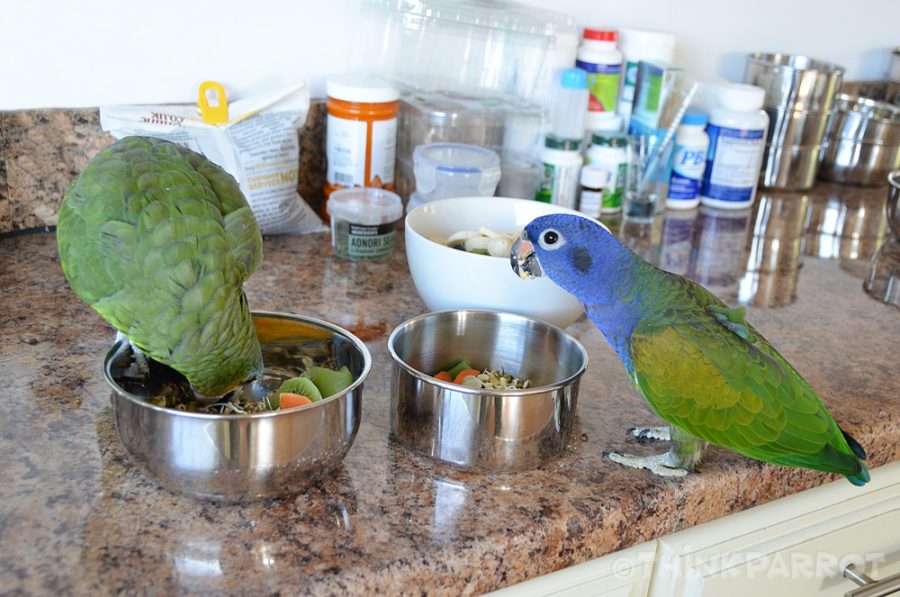
There is more information about reinforcers and fearful parrots here: Fearful Parrots and How to Tame/Gain Their Trust
An Introduction to reinforcing consequences and how to identify them
Notice the behaviours your birds repeat and see if you can identify the reinforcers that keep those behaviours happening. Try to be specific – for example, instead of treats, name them: pine nuts, peas, corn niblets, etc
Most reinforcers are secondary reinforcers. They are learned rather than inherent. They are learned by pairing them either with primary reinforcers (mentioned above) or other secondary reinforcers. You’d be surprised at how many reinforcers your birds have. It can be a good idea to list them. Some of these you can use to reinforce new behaviours or to trouble shoot problem behaviours. Kobe is a Blue-headed Pionus, his potential reinforcers include:
Toys – certain foot toys
Looking out of the window at all the outdoor birds
Treats – pieces of almond, corn sprouts, pomegranate arils
Attention – includes praise such as animated talking or laughter
Head scratches, play wrestling with my fingers
The following behaviours are often repeated which tells me that they are being reinforced somehow. Probably with my attention plus in some cases intrinsic reinforcement (comes from within eg. taste, touch, sound, etc.):
Throwing toys on the floor
Throwing CDs on the floor
Chewing boxes
Chewing things he shouldn’t like books, my boots, the jute bags on top of the fridge
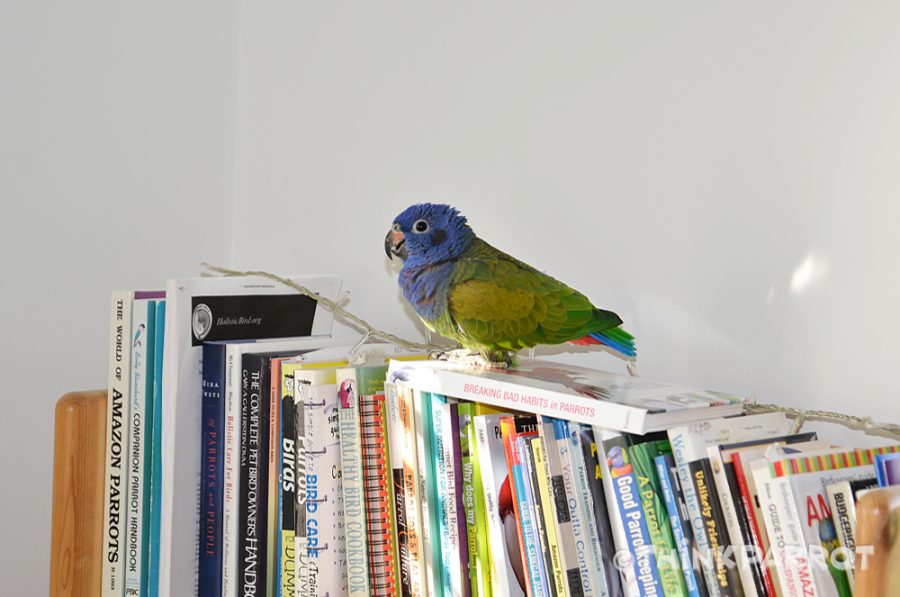
I can use some of these potential reinforcers to teach Kobe new behaviours or redirect unwanted behaviours.
It is beneficial to Kobe and me if he quickly steps up when asked and is willing to go back into his cage. It means he can be out of his cage before I have to go out. I need to ensure the step up is highly reinforced as well as going back into his cage.
I could reinforce his step up with a treat, but Kobe isn’t willing to take a treat at that time of day. So I tried taking him over to the window instead. I know this is reinforcing as the step up behaviour has continued/increased. Then I give him loads of attention (talking/praise) as I carry him over to his cage. This is to reinforce his staying on my hand and not flying off. There are lots of reinforcers waiting inside his cage: a fresh breakfast bowl, a newly filled foraging toy, perhaps some favourite foot toys visible in a container and maybe a couple of “new” ones rotated in so he doesn’t get bored. Kobe is usually very eager to go in.
However I won’t shut the cage door until he is involved in some sort of activity like eating. That way the closing door is paired with something good and he’ll be more likely to go inside next time. We have one happy bird and I am happy as the process only takes a few minutes ensuring I’m not late.
At night, Kobe goes into a night cage. The behaviour is reinforced with a piece of almond. I taught him the behaviour using a process called shaping. Shaping is breaking down the target behaviour (entering the night cage) into tiny manageable steps. Each of those steps builds on the last and was reinforced with pieces of almond. There is more info about shaping in this thread: Step Up Training For Your Parrot Using Shaping
As a bonus the travel cage has now been paired with something good (almond pieces) and he can’t wait to take himself off to bed at night with the words “yum yum”.
Accidentally Reinforcing unwanted behaviour
Attention is a huge reinforcing consequence for Kobe. If I had ignored his first instance of CD throwing, the behaviour would probably have died out. But he got an increasing amount of attention for the behaviour… I didn’t like my CD cases shattering on the hard floor. By the time I realised what I had done, it was very difficult to redirect his behaviour. In the end I decided to remove the antecedent (or cue) for the behaviour, which was the presence of the CDs, and put them away where they should have been in the first place. Problem solved. Changing the cue/antecedent is often the quickest and kindest way to end a problem behaviour.
In the same light, I can see that the chewing of the bags on top of the fridge, my boots and most other unwanted behaviour have actually been reinforced by me. It is killing me to ignore his bag chewing but interestingly over the last few days the behaviour is decreasing! Plenty of reinforcement for me to keep ignoring. Now if I was to ignore the behaviour for as long as possible and then have a melt down at it (LOADS OF ATTENTION!) or even just a glance at him (ATTENTION!) whilst he was doing it, it would have the reverse effect. The behaviour would become stronger. I would have put the bag chewing on an Intermittent Schedule of Reinforcement. Kobe would know that if he keeps chewing, every so often (intermittently) he’s going to get the attention reinforcer!
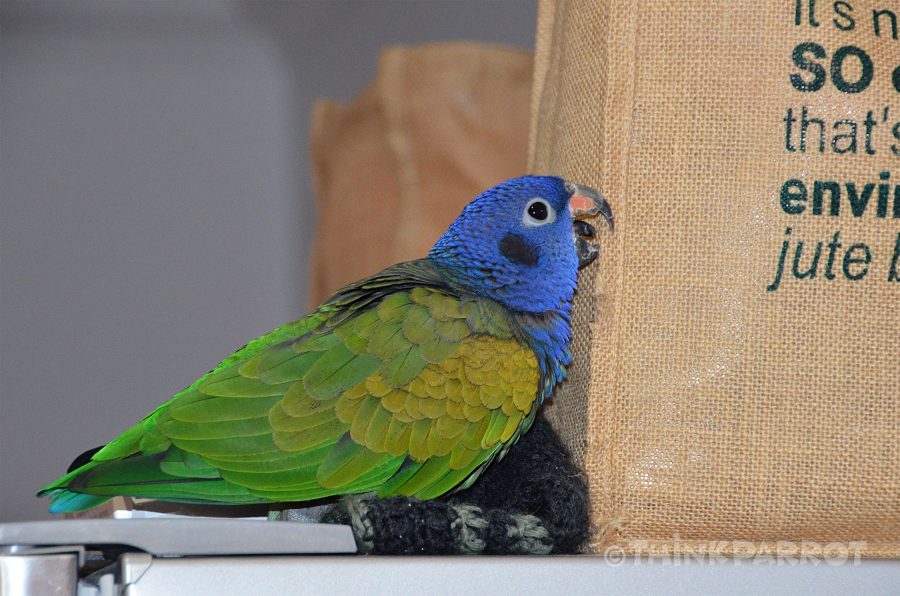
Instead I need to be vigilant and highly reinforce any other acceptable behaviour before he even thinks about engaging in the unacceptable. Even if he is sitting quietly I can easily reinforce his calm behaviour with a head scratch. Too often we forget to reinforce “good” behaviour and tend to concentrate on the “bad”.
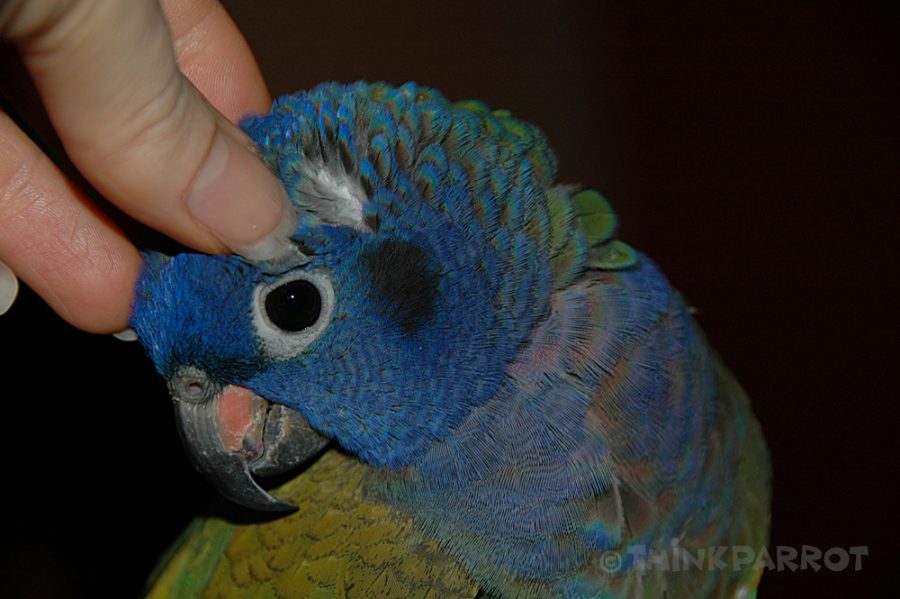
Check out these great resources:
Dr Susan Friedman’s http://www.behaviorworks.org/index.html
Lara Joseph’s https://www.theanimalbehaviorcenter.com/
Barbara Heidenreich’s http://www.goodbirdinc.com/

